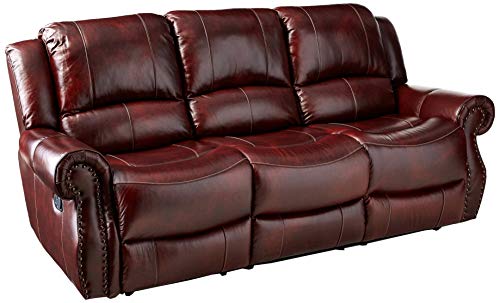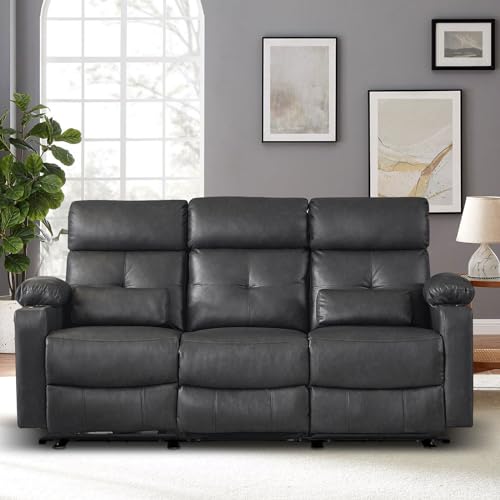Blogs
on July 7, 2024
How to Spot a Genuine Leather Sofa
This sofa is a great addition to any room. The leather upholstery is buttery soft. Customers love its simple style and top-quality, genuine leather upholstery.
Untrained eyes may be unable to identifying the difference between real and faux leather. Here are six tips to help you tell the difference between real and faux: 1. The rough edges.
1. Labels are important
Real leather has a unique style and feel that's difficult to duplicate. It's also robust and easy to clean. It doesn't absorb body oils, making it a perfect choice for those with allergies. Not all leather sofas, however, are made equal. In fact, some stores have been known to misrepresent PVC as genuine leather.
To help you avoid getting scammed, it's essential to know the various types of leather. This includes determining the full grain and top-grain leather, as well evaluating the quality material of the upholstery. Discerning retailers will be more than willing to share this information and more, so don't hesitate to inquire!
To determine if you have a genuine leather sofa you should first look at the label. The label should clearly identify the type of leather used to cover the sofa, and any other materials such a fabric or cotton. In addition, reputable suppliers should have clear policies on exchange or return in the event that you aren't satisfied with your purchase.
If the sofa doesn't come with any label, you can still work out its authenticity by examining the fabric backing or opening up a cushion casing to check for synthetic material. You can also examine the texture of the leather to see whether there are any bumps or imperfections. These are indicators that the leather is fake or bonded.
You can also test the integrity of the sofa by rubbing its surface. Genuine leather is soft and smooth in texture. Faux leather or bonded leather is rougher and feels more like suede. You should also be able to feel the difference between wrinkles, bumps, and printed patterns of faux leather and genuine leather.
While a genuine leather sofa may cost more than a faux leather couch (just click the next article) counterpart It's a wise investment as it will last longer and will often become family heirlooms over the years. You can limit the damage that's caused by the sun, ozone, heat and humidity by putting your leather sofa in a cool, dark room away from fireplaces, heaters and air conditioning. You can also use leather protection creams to keep your sofa in good shape and sturdy.
2. Look to the back
If the label doesn't inform you what kind of leather sofa is, you need to get up-close and close to it. The scent, the texture and the backing will be clear indicators of authenticity.
When you touch the surface of genuine leather, it won't feel smooth and silky. This is due to the fact that animal hides have diversely shaped pores that allow them to breathe. A product that feels totally smooth could be fake leather.
Check for bumps or uneven surfaces. The process of preparing genuine leather includes buffing, which takes away some of the rough outer skin. If the leather covering your sofa is top grain leather, there'll still be some bumps.
You can also test the quality of leather by putting your finger into it and running it over it. If the leather is real it will stretch and wrinkle like human skin. This means it's capable of breathing, ensuring that the leather does not become dry and crack over time.
Faux leather has a consistent pattern because it's printed, while genuine leather is prone to imperfections that enhance the beauty and durability of the leather. This can be seen in scratches, creases and marks. Genuine leather is soft and a little stiff when it's new. But, it should not crack or dry out when you regularly condition it with a leather protection cream.
To cut costs, some furniture makers make use of a mixture of real and synthetic leather to make their products. The contact areas, like the seats, arm rests and backs are made from real leather while the non-contact components, like the base and the outside arms, are upholstered with the less expensive polyurethane or synthetic leather. This is a common practice and even if the couch has a genuine leather label, you should check it closely to see what the backing is made of, as this is an instant giveaway that it isn't true genuine leather.
Labels and prices can point you in the right direction, but to ensure that a sofa you purchase is genuine leather, you need to meet up close and close to it. Feel it, smell it and check its back for a backing of polyurethane that is a clear indication that it's not genuine leather.
3. Check out the seat
A genuine leather sofa's seat is also an excellent indicator of the quality. While many faux leather couches use a mixture of materials for upholstery authentic leather has a unique texture that is soft to the touch, but isn't entirely uniform in color and shade. Be aware of bumps under the surface and a strong natural scent. These features distinguish genuine leather from cheap or fake fakes.
If the leather is stitched in a continuous, huge piece, that's another warning sign. Although this isn't uncommon when using faux leather, if you see this on genuine top-grain leather, it's most likely to indicate that the sofa isn't of high-quality and should be avoided.
Pricing and labels may give you a hint, but the only way to be sure is to be in close proximity with the furniture. Genuine leather will not be perfect and feel uneven. It will also have fat wrinkles under the surface and rough edges. The suppleness of genuine leather is distinct from synthetic materials and the temperature of the furniture will tell whether it's constructed using genuine materials.
A leather sofa is a staple of interior design for a reason: It's stylish, durable and lasts for a long time. In addition, it's easy to clean and resists liquid spills, making it a smart option for families with children or pets. Genuine leather is a timeless design that will never go out of style. It's also available in a variety of prices.
For a timeless leather couch that can stand the test of time, look into the Pottery Barn Turner. The two-seater is expensive however it's made with top-grain leather that will last a lifetime. It's a great choice for those with small rooms, too, because it comes in three sizes and is small leather couch enough to fit in most rooms.
If you're looking for something a little more modern, consider this All Modern Geo Genuine Leather Sofa. The couch is a mid-century modern design with an elegant, angular frame and cylindrical pillows that blend functionality and form. The frame is made from plywood, composite and plastic, the sofa features genuine leather only in the seating area which is a nice step up from Ikea's faux-leather sofa that won CHOICE's "Shonky" award in 2015.
4. Look at the smell
Real leather has a distinctive smell that is a natural organic skin scent that can't be duplicated. If the sofa that you're looking to purchase has a strong, artificial scent it's not authentic. It is usually due to the chemicals used to treat leather. These chemicals can remain on the furniture even after it's been made.
A great way to determine the quality of leather sofas is to gently run your fingers along the surface. Real leather will feel rough and show lumps and bumps, just as human skin. If it feels smooth and cold it's probably fake or it's bonded.
You can also open one of the cushions to look at the backing. Faux and bonded leather may have a polyurethane backing that supports the manufactured upholstery, while genuine leather has a natural back that resembles in appearance to coarse suede. If you spot a woven backing, it's an indication that the sofa isn't real leather.
Peter suggests that if are trying to determine whether the sofa is authentic the best way to determine authenticity is to place it against your body and gently run your fingers along the surface. The grit on the leather will make your fingernails duller and the leather should be stretched and wrinkled slightly. It will also feel warm to the contact.
Turning the sofa on its back and checking the upholstery will also tell you if it is genuine. Genuine leather is a solid piece of leather, not a plastic coated faux or the bonded leather.
 Think about how often you'll use your leather sofa and how long it will last when choosing the quality. The more you use your sofa in a given time, the more it will require to be taken care of. Peter recommends regular, gentle cleaning using a conditioner for leather. This will help keep the leather's suppleness intact and prevent it from drying out and becoming hard.
Think about how often you'll use your leather sofa and how long it will last when choosing the quality. The more you use your sofa in a given time, the more it will require to be taken care of. Peter recommends regular, gentle cleaning using a conditioner for leather. This will help keep the leather's suppleness intact and prevent it from drying out and becoming hard.
 Think about how often you'll use your leather sofa and how long it will last when choosing the quality. The more you use your sofa in a given time, the more it will require to be taken care of. Peter recommends regular, gentle cleaning using a conditioner for leather. This will help keep the leather's suppleness intact and prevent it from drying out and becoming hard.
Think about how often you'll use your leather sofa and how long it will last when choosing the quality. The more you use your sofa in a given time, the more it will require to be taken care of. Peter recommends regular, gentle cleaning using a conditioner for leather. This will help keep the leather's suppleness intact and prevent it from drying out and becoming hard.
Be the first person to like this.





